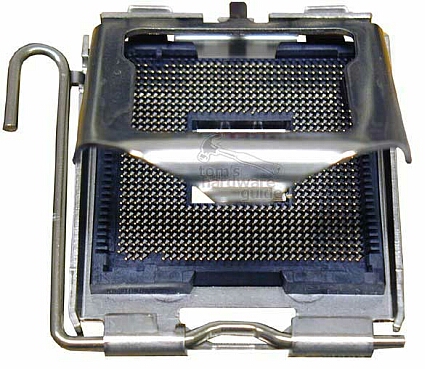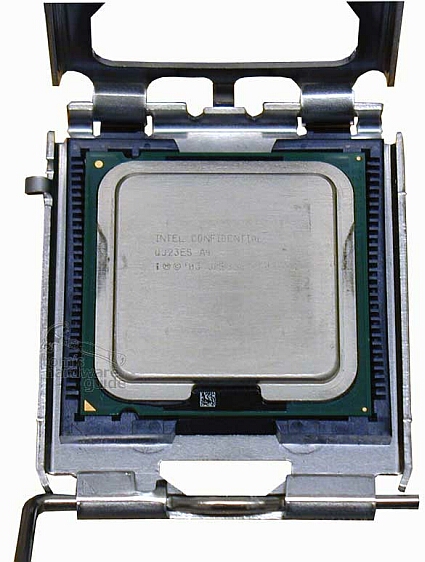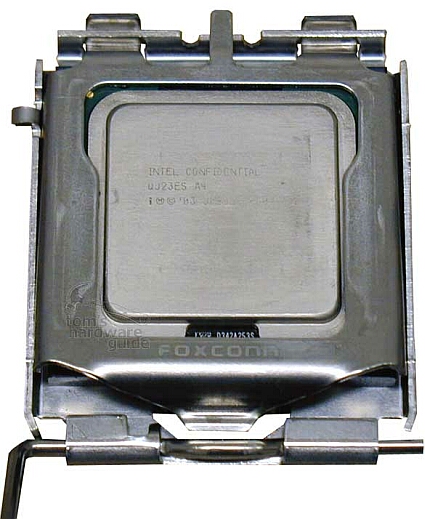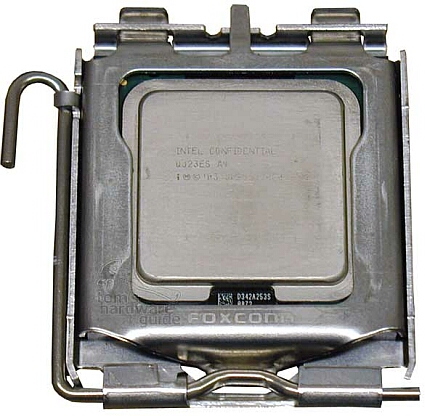Sneak Preview: Intel Alderwood/Grantsdale Chipsets
Socket 775: CPUs Without Pins
The most visible characteristics of socket 775 are the presence of pins, rather than exposure holes, and the metal frame.
Even those who are computer literate usually marvel at the new processor package and socket. The newcomer has 775 pins, hence the name Socket LGA775. LGA stands for Land Grid Array and refers to the flat contacts at the processor. The pins are now part of the socket.
Originally, CPUs for the LGA socket were only used in server systems, where the number of pins increased much earlier than in desktop systems, and where innovative solutions were more essential. So the advantages of LGA775 are the increased pin density and better electrical characteristics of this variant. The disadvantage is the fundamentally higher costs, but this shouldn't be a worry for Intel due to the high quantities that will be eventually be available.
In order to ensure that the contact between the processor and its socket is reliable, the socket mechanics were changed, too. While there is still a locking lever, its primary purpose is to press the metal frame to the processor in order to secure the contact (see photos).
After opening the locking lever (left), the metal frame can be opened.
Thanks to the absence of pins, the processor is less delicate. However, the socket is now susceptible to twisted or broken pins.
When closing the frame, pressure is applied to the processor from two sides.
Get Tom's Hardware's best news and in-depth reviews, straight to your inbox.
Lock the lever to secure the processor.
Current page: Socket 775: CPUs Without Pins
Prev Page PCI-X Vs. PCI Express Next Page Comparison: Sockel 478 And Socket 775
Patrick Schmid was the editor-in-chief for Tom's Hardware from 2005 to 2006. He wrote numerous articles on a wide range of hardware topics, including storage, CPUs, and system builds.




